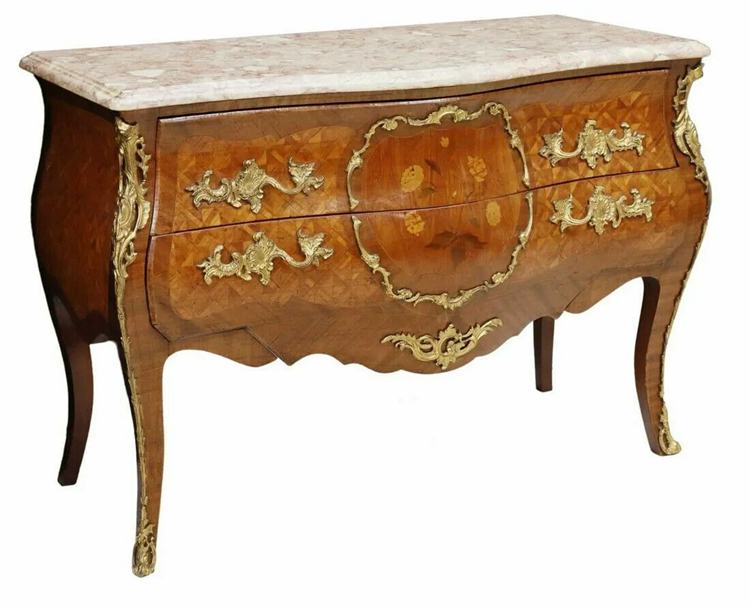
The antique furniture styles, from Victorian to Edwardian, have been around for centuries. They come in various materials such as wood, metal, and plaster.
Aside from the various shapes and designs, these types of furniture also come with many other features, such as intricate carvings and designs on the frames.
Furniture is a central part of every home, so it is crucial to understand the popular design styles during different periods.
Table of Contents
Different Styles Of Antique Furniture
Do you have an antique piece of furniture and want to know which style it belongs to?
Here is an overview of some famous antique furniture styles. Study them and get to know if your piece belongs to any of these antique furniture styles.
William and Mary
William and Mary furniture style is a popular design used during the 17th and 18th centuries. The style typically showcases overlaid wood or ornate carvings painted in a lighter color than the primary wood.
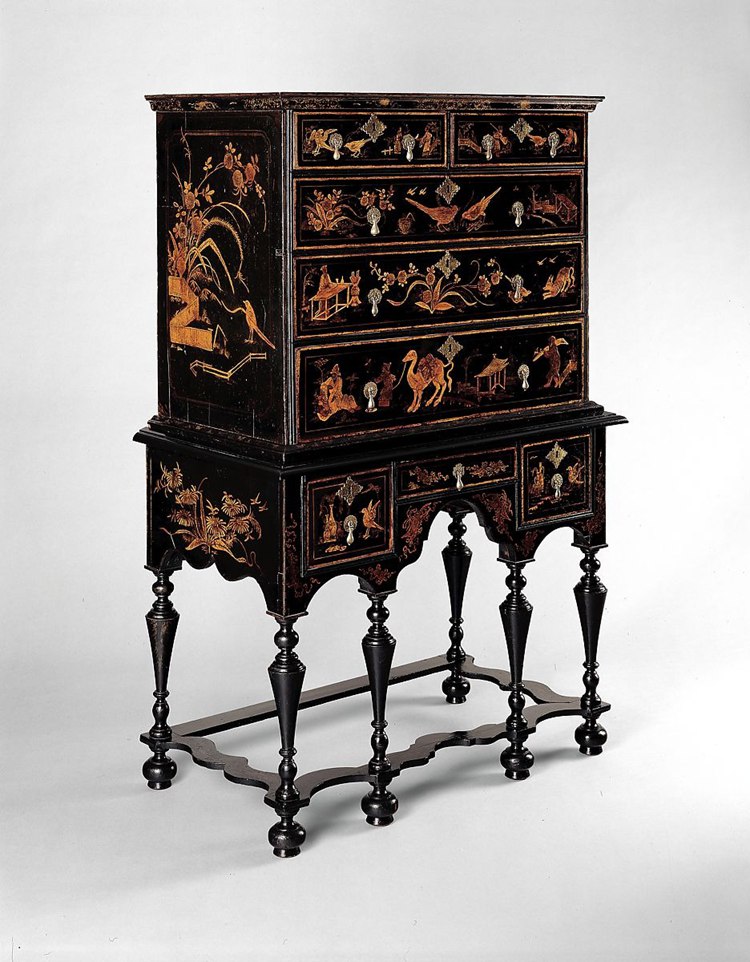
It has influenced today’s furniture designs, often seen in Georgian, Regency, and early Victorian styles.
Many pieces of furniture made during the William and Mary period used turned wood, a process where the wood is shaped using a lathe.
The decoration of these pieces required more skills than carving, giving rise to workmen who were well versed in carving, painting, and gilding.
Coach builders or cabinet makers did much of the furniture produced during this period.
William and Mary period furniture has an ornate appeal, unlike earlier English styles with simple elegance.
Furniture was common for many wealthy families at the time to add luxury to their homes in the William and Mary style. It was done for many reasons, including that furniture during this period was more decorative and styled grandly.
Queen Anne
Queen Anne’s furniture style was one of the many styles of eighteenth-century English furniture from the reign of Queen Anne. As its name implies, it is characterized by arched or turned legs with a distinctive oval shape.
Queen Anne’s furniture style became popular in North America in the 1700s and 18th century, along with other European-styled furniture. It later spread around the world. They often decorated the style with carved fruit, flowers, and leaves on surfaces such as chairs and chests of drawers.
Furniture pieces made during this time have been described as colorful, comfortable, delicate, and feminine because they typically had rougher edges such as jointing boards than earlier English Baroque designs had used to make that form more refined.
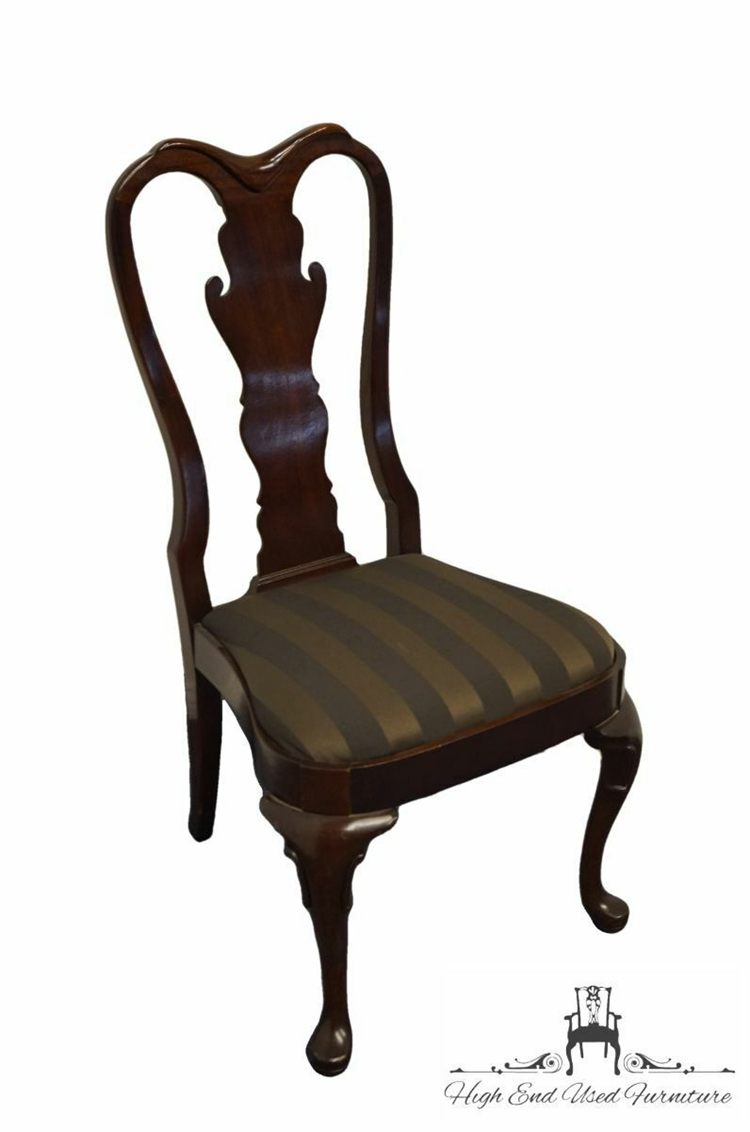
Queen Anne furniture is often made of oak, walnut, maple, or cherry wood. It is said that the name of this style comes from the Queen Anne period in England because fashion taste and styles in England during that time trended toward more elegant designs when the French style was more common.
It is also said to contain Far East influences brought by trade and conquest, such as that of China and its furniture design.
Empire (Classical)
In the first decades of the 19th century, a new style emerged in many parts of Europe and America. Known as the “Empire,”
This type of furniture grew out of a desire for a more elegant style of less heavy-looking furniture to sit or relax. Some pieces have hinged footrests; others may feature attached armchairs or couches that can be widened for extra comfort.
This type was so popular because it incorporated different shapes and styles from multiple sources into an eclectic mix.
Empire furniture is made from wood such as oak, cherry, mahogany, and pine. These are combined with brass or copper nails to create ornate interiors often ornamented with animal figures and other symbols.
Other features include cabriole legs ending in ball feet that support upholstered armchairs or divans.
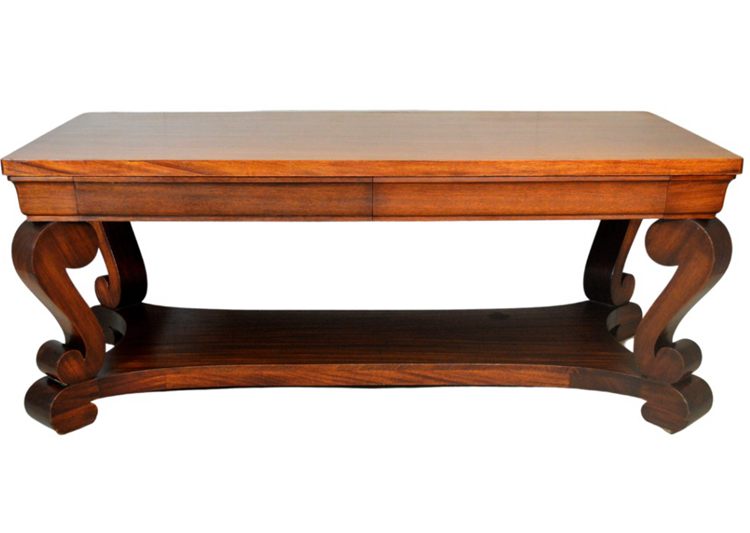
Chippendale
The Chippendale furniture style is an 18th-century Georgian furniture design that became popular in Britain and the United States.
Cabinetmaker Thomas Chippendale, who published his book The Gentleman and Cabinet Maker’s Director in 1754, featuring designs for upholstered furniture and other domestic items, designed it.
The chair legs were tapered, and the armrests became more prominent without a center.
This style had its roots in French antique furniture but was so new it was named after the famous London street where it first appeared.
It is known as the Chippendale Furniture Style because Thomas Chippendale was one of its early inventors who introduced this concept to North America in 1754 and Europe in 1760.
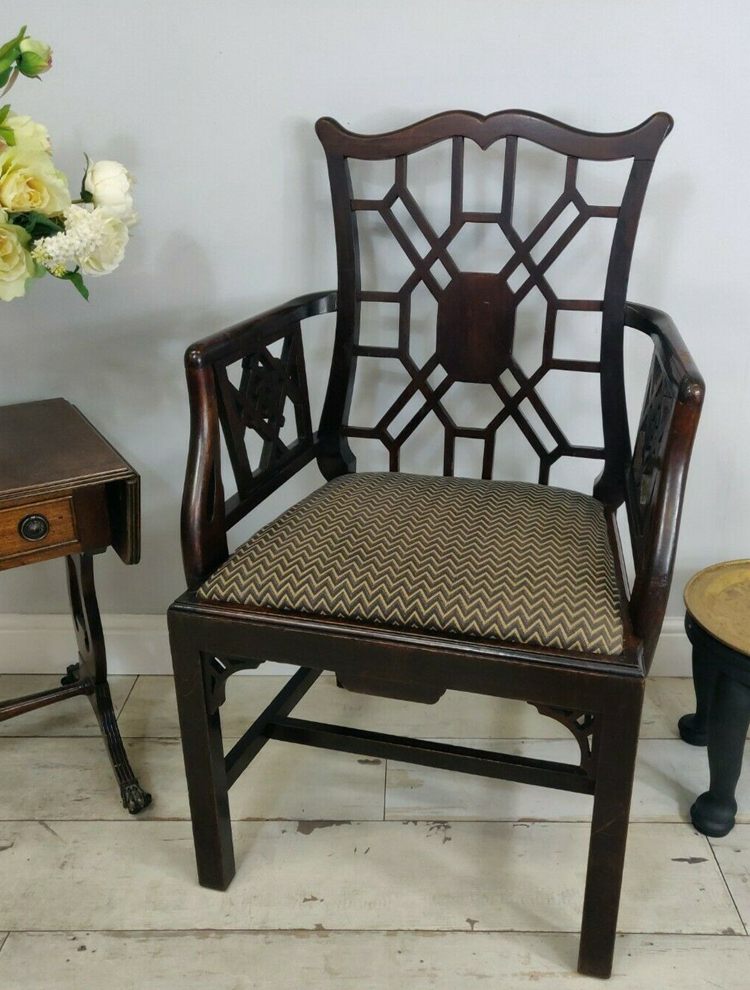
It evolved from the Queen Anne style, which had previously been “the height of fashion”. The piece classified as the first true example is a reading table made in 1755 by Thomas Chippendale.
Sheraton
In the 18th century, the Sheraton furniture style was one of the most popular styles worldwide. It has a clean, simple look characterized by minimal ornamentation and only a few pieces per room.
The style was named for Thomas Sheraton, but he didn’t invent it — he just published designs for it in his book “The Cabinet Maker and Upholsterer’s Drawing Book“.
Sheraton furniture is recognizable thanks to its straight-line construction without many curves or angles, its lack of elaborate carvings, and its simplicity of form with four basic legs on each piece. The lines were usually straight and even, making for a strong and stable piece.
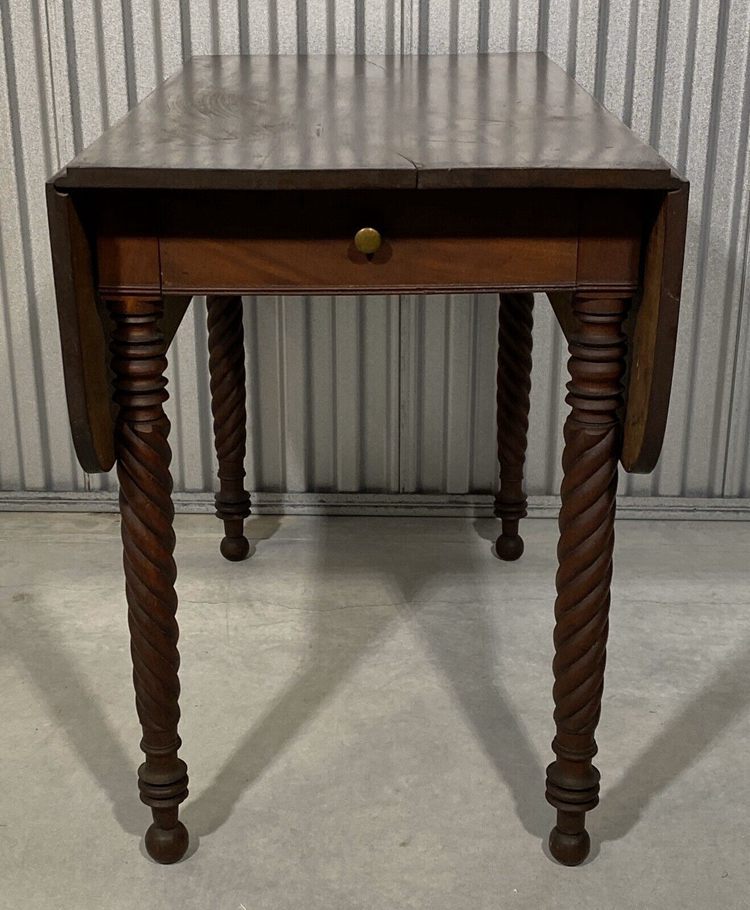
Federal (Hepplewhite)
Federal furniture is a style of decoration in North America and Europe that was very popular from 1790 to 1815.
It is characterized by symmetry, low-relief ornamentation with linear patterns, and the contrast between warm woods like mahogany and walnut with ivory or gilt.
This style is also called the Hepplewhite style because it was heavily inspired by Alice Hepplewhite’s book “The Cabinet Maker And Upholsterer’s Guide“.
Hepplewhite furniture is characterized by the following:
- Neoclassical decorative motifs, especially the anthemion, echinus, and lyre.
- Geometric forms and lines.
- Symmetrical arrangements emphasize straight lines, radiating motifs, and torus moldings.
Specific forms included chests of drawers as well as dressers. The back of the chairs was made sloping to support cushions or upholstery. Upholstered chairs are short-backed with curved legs and arms angled to help calico seat covers.
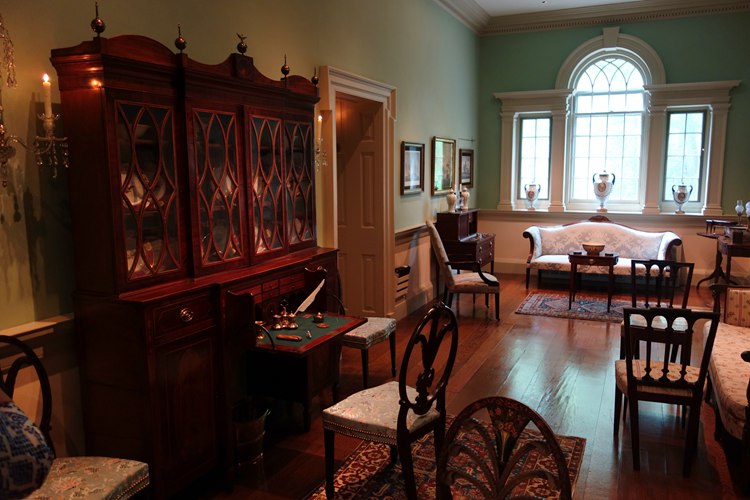
French Restoration
French Restoration furniture was popularized after Napoleon restored the French monarchy in 1814. The name of this era originates from the “restoration” of the Bourbon dynasty to power after Charles X surrendered in 1830.
Heavy ornamentation and light colors characterized this style, such as white and soft blues, lilacs, or golden browns.
The furniture in this style had a very exotic and mysterious look to it, as well as being very expensive. Because of this, the style was mainly used for public spaces rather than private use. As time went on, the style began to change.
The Oriental influence grew smaller, and the details became far less complicated. The new design opened up entire spaces instead of using lots of small wall space and decorations.
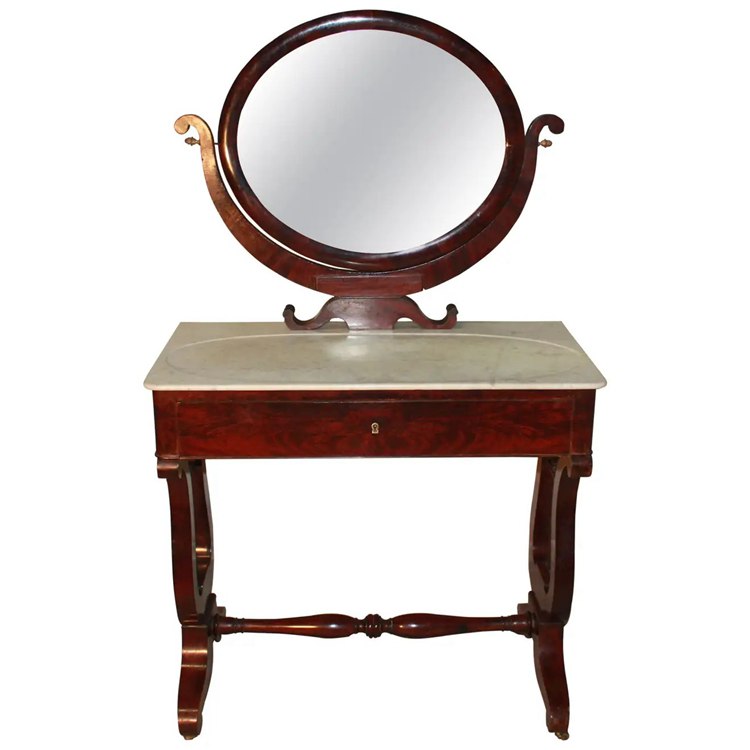
The Gothic Revival
The Gothic Revival furniture style significantly influenced English, European, and North American furniture design. It started sometime around 1840 and continued until 1860.
This period coincided with the Victorian era, and its popularity was due to the returning interest in medieval art and architecture with growing nationalism.
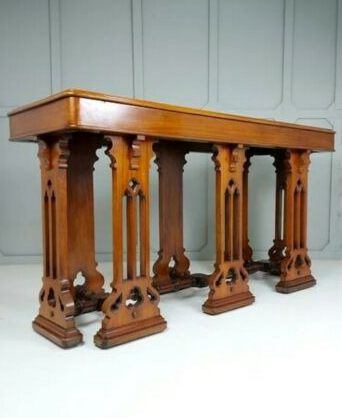
Furniture during this period was also characterized by classic wood carvings, elaborately painted panels on the walls and floors, and carved furniture cornices.
The most popular wood used to create these furniture pieces were walnut, mahogany, and oak. However, lighter woods were also used, like birch and maple.
Rococo Revival
The Rococo furniture style originated in France during the 18th century. It is characterized by its elaborate details and exuberant design, adding a lot of charisma to the furniture.
Often called French Chinoiserie due to its Chinese-inspired elements, Rococo furniture is usually made of exotic woods like mahogany, teak, and cherry.
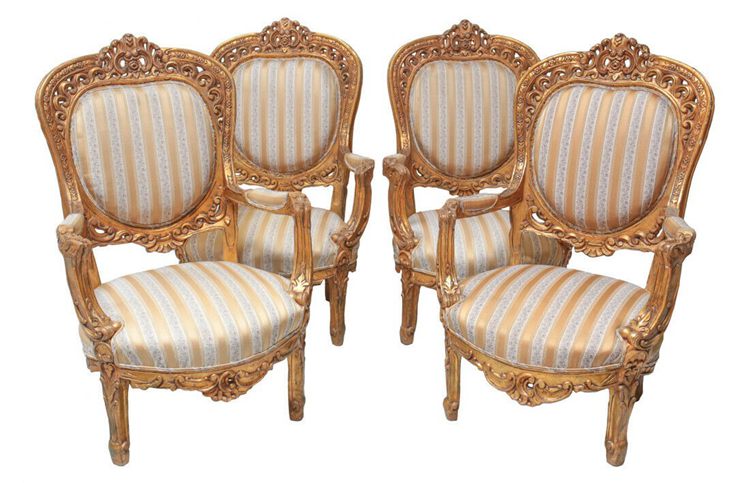
Louis XVI
The Louis XVI style is characterized by its rich, heavy woods, especially mahogany and oak. The furniture was designed with ornate carvings on the edges. The style evoked the age of monarchy, which the French tried to escape after their revolution.
This style draws its influence from Neoclassical forms and archaeological discoveries in Greece and Rome. Its design arose from classical architectural structures such as a triumphal arch.
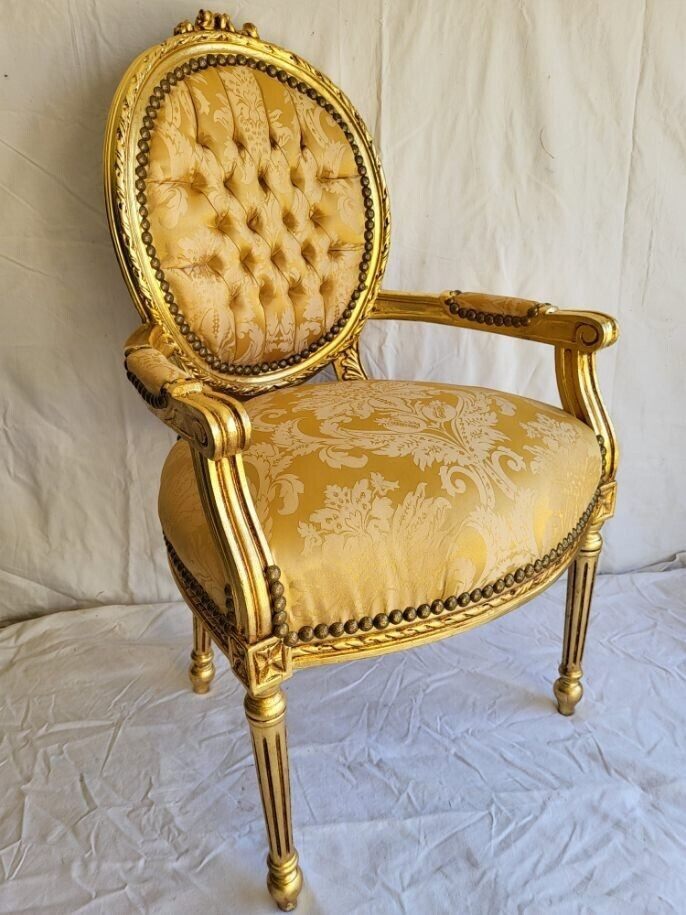
In contrast with the heavy, solid styles which preceded it, Louis XVI’s furniture style was lighter and more refined.
The furniture pieces were ornamented with delicate curves and geometric patterns but were otherwise very simple.
It was a time of elegance, wealth, and prosperity in France; naturally, these feelings influenced the design of its furnishings.
Victorian
The Victorian furniture era is a style that has since become one of the most popular and well-known.
The highly decorative, ostentatious style became popular in the early 1800s with England’s King George IV and influenced design throughout Europe and North America.
Pieces such as elaborately carved chests of drawers, sleek lines, and minimal ornamentation became popular.
Victorian furniture was the first ever style designed during the industrial revolution.
The Romantic influence, heavy proportions, dark finish, and elaborate ornamentation distinguish Victorian furniture from other styles.
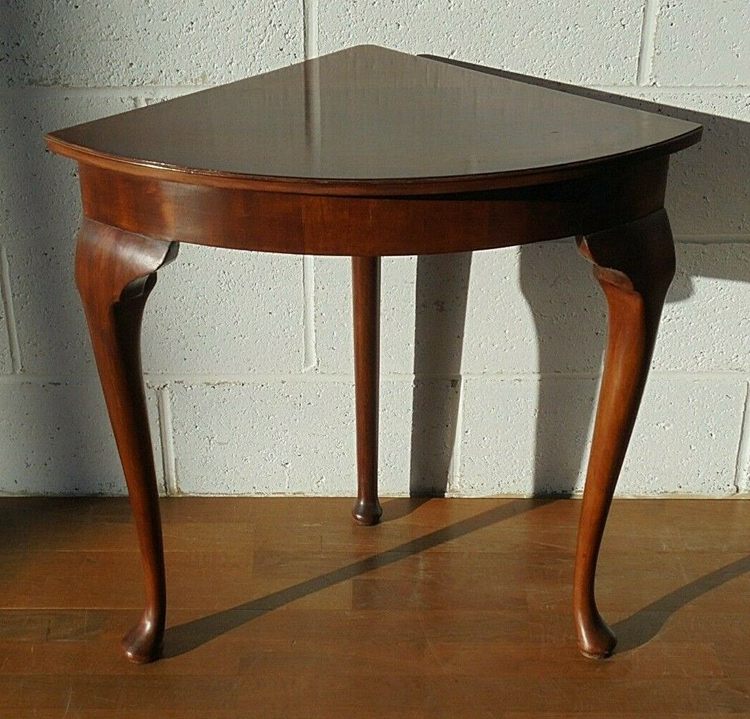
Elizabethan
A furniture style that is often attributed to Queen Elizabeth I of England. It was primarily used to create furniture such as candle holders, tables, and chairs.
The style inspired the Renaissance era and featured decorative motifs such as shells or leaves.
The Elizabethan period is known for its delicate and ornate details, typically in white or silver. This traditional style is currently popular in decorating practices within homes due to its unique blend of craftsmanship with whimsical decoration found within a more practical design.
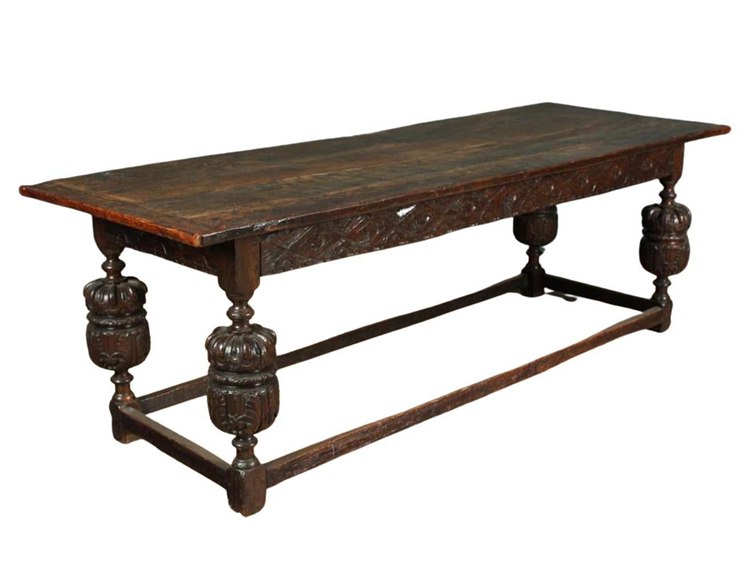
Jacobean
The English Early Revolution gave birth to the Jacobean style. Straight lines, ornate carvings, and a dark finish characterized Jacobean furniture.
The style was well-known for its grandeur and opulence. When it first became public, it sparked significant demand for expensive custom pieces that could only be afforded by the wealthy.
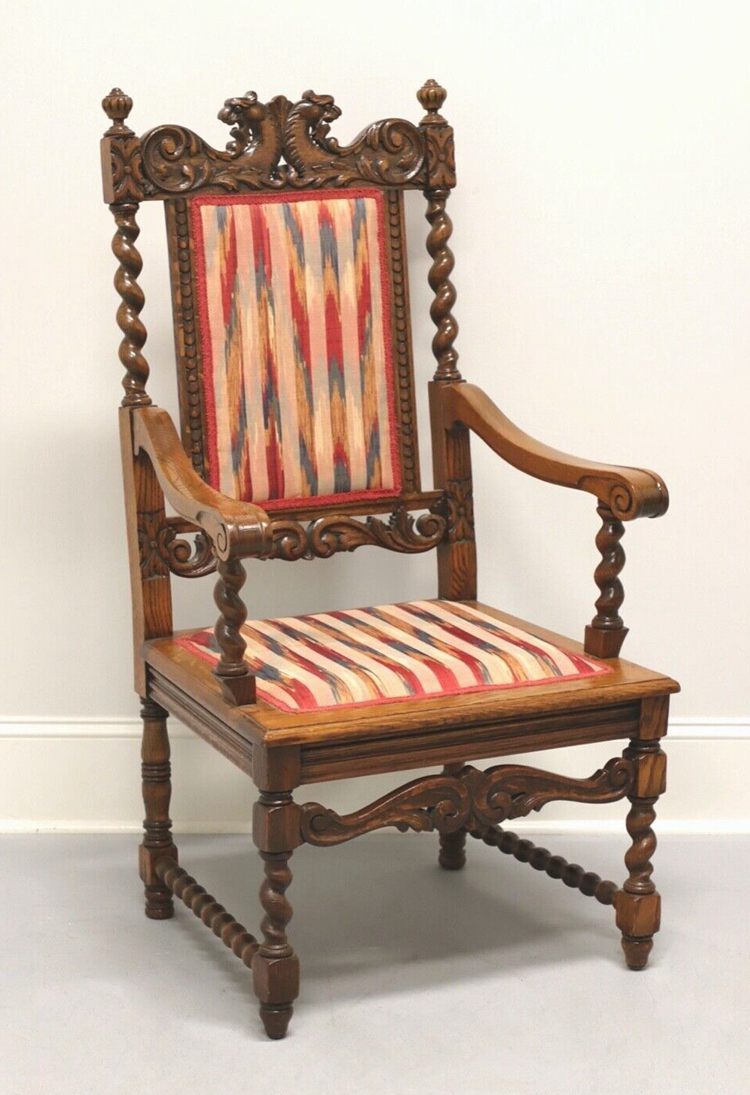
Naturalistic
This furniture period incorporates more flowers and fruits into the scrolling effects of Rococo Revival designs.
More emphasis is given to the leaves, so much so that it is possible to tell whether they are supposed to represent grape, rose, or oak leaves.
Manufacturers developed a method of laminating wood together, improving this design style. This layered effect was achieved by gluing thin layers together and running the grains at right angles on each new layer.
Original labels with these names are occasionally found on furniture pieces from this era, providing additional provenance.
Eastlake
The Eastlake style was one of the most influential styles to emerge from America. It evolved in the late 19th century and peaked during the 1880s and 1890s.
This style’s furniture is more rectangular. Brackets, grooves, chamfers, and geometric designs were used to embellish the furniture piece. This style piqued the interest of American furniture manufacturers because it was simple to mass produce.
The used woods were dark once more, but more native woods, such as oak, maple, and pine, were included. Legs and chair backs are straighter, with incised decoration.
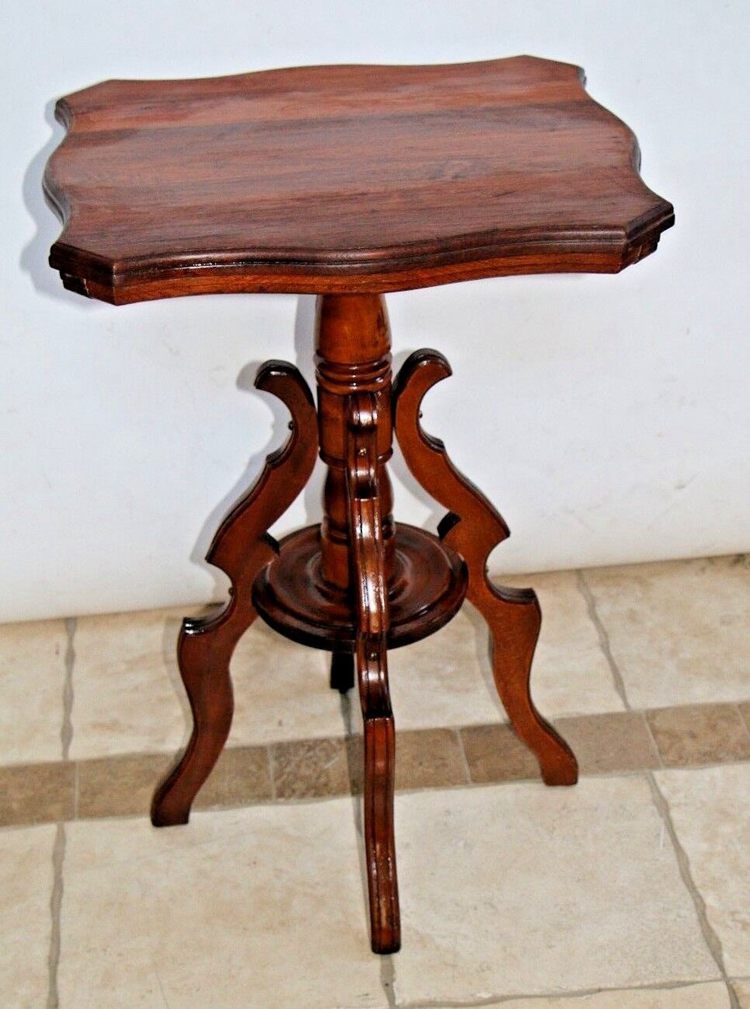
Néo-Greek
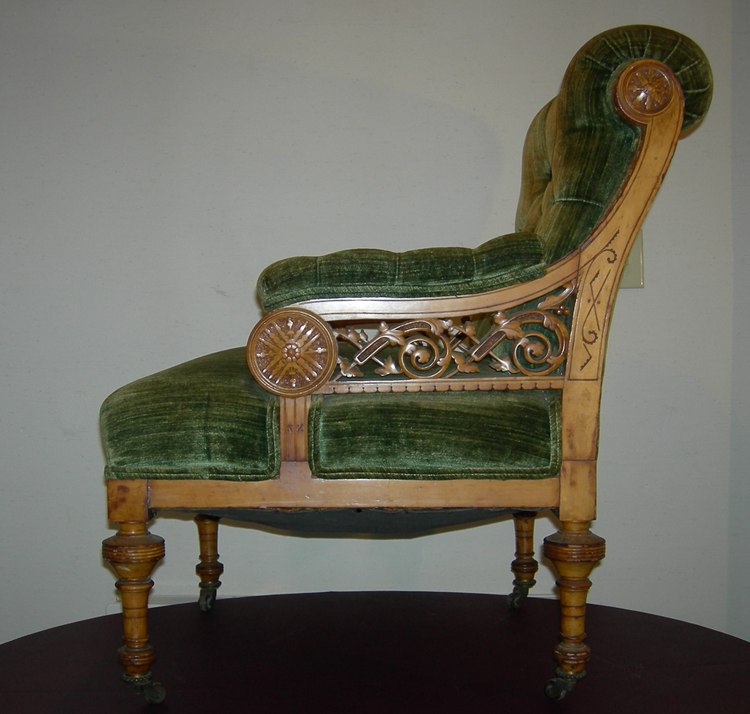
The Neo-Greek Furniture Style, 1855-1885, refers to a period when furniture was created in the style of ancient Greece. It is often called the Victorian Neo-Greek Revival, seen in the table and décor that emerged during this time.
Neo Greek Furniture is usually made from mahogany or walnut and features beautiful shapes with exaggerated proportions.
For example, chair backs sport high wings that resemble an eagle’s wingspan. Columns are also standard, as well as ornamental carving of acanthus leaves or floral designs on chairs and tables for decoration.
Arts & Crafts
This style is a combination of both Mission and Arts & Crafts styles. The design features simple lines and carved detail that won’t distract your eye, along with styled details typical of Arts & Crafts architecture like rough-hewn wood.
There were also many decorative elements like curves, hand-cut pin-wheel joints, and bandsaws to create tops on tables or other furniture pieces.
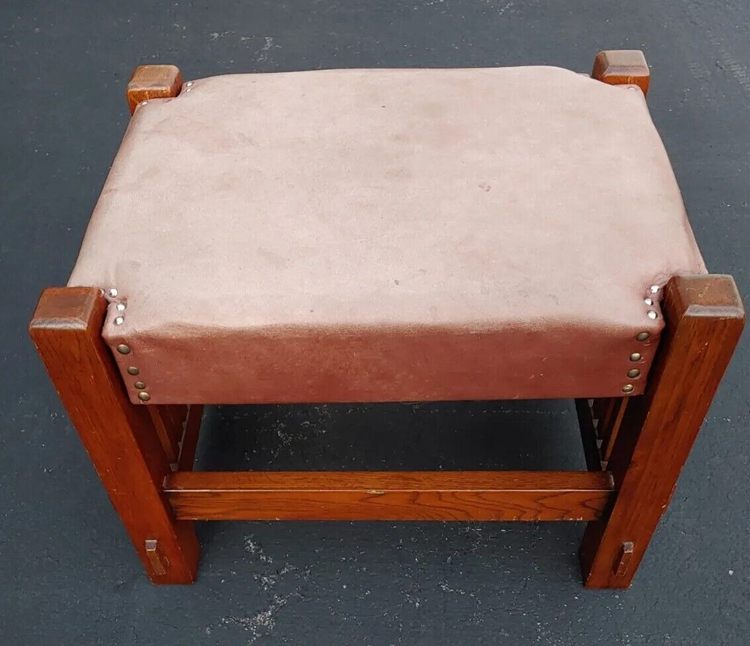
Mission Furniture
This style has a simple, carved look with no frills or extras to distract you. Due to its simple design, a large amount of this furniture is still in excellent condition!
Mission furniture is usually made from walnut-stained, deep brown; however, other hardwoods like ash were also famous for this style. The furniture is generally made of quarter-sawn lumber and heavily sanded.
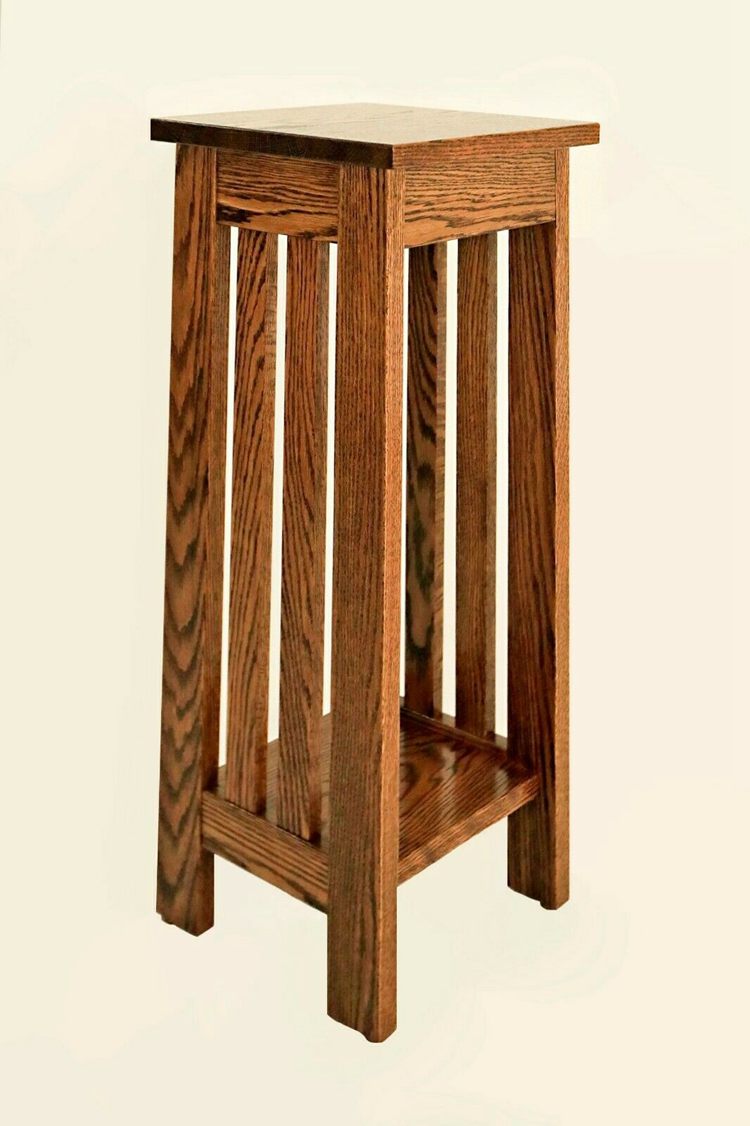
Art Nouveau
The Art Nouveau furniture style was a design style popular in the late 19th and early 20th centuries. It was most commonly found in cast, wrought iron, and brass alloy furniture, typically ornately decorated with floral motifs and natural shapes.
The style arose from the Vienna Secession movement of the late 19th century and spread rapidly to Paris and Brussels, where it achieved its most incredible popularity. Art Nouveau furniture was in vogue from the turn of the century until about 1914 when more simple art deco designs replaced it.
Some of the most famous examples of art nouveau furniture are those by Louis Majorelle and Emile Gallé. They used organic forms and natural materials such as ebony, hardwoods, and horn.
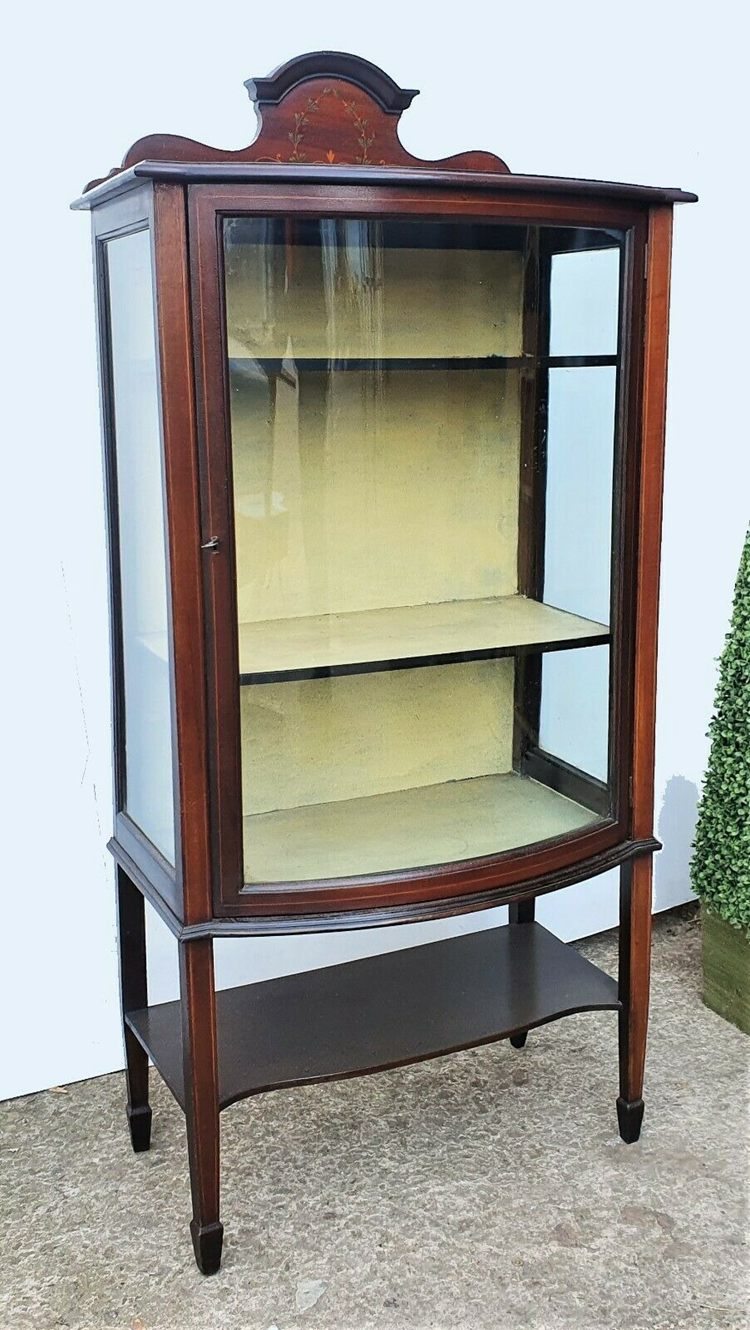
Craftsman Furniture
Craftsman-style furniture has a lot of solid wood with a hand-carved look. Sometimes the wood was painted or stained to add to the overall look and feel of the room, but some vintage pieces were left unfinished for buyers to show off their skills at staining or painting.
Craftsman furniture is often made from oak or pine and sometimes ash. The legs and other protruding pieces of the furnishings were rounded in the Victorian style before becoming flat and boxy during this period, with notable legs being more than a foot tall.
Art Déco
The famous Art déco movement influenced this furniture style in architecture and art. It was distinguished by smooth, complex lines that resembled a snail’s shell; the details were frequently ornately carved out by hand.
Designs were often symmetrical, with the same information on both sides, and curving lines of varying sizes were used to create a sense of movement as you looked at it.
Art déco furniture was typically made of mahogany or rosewood, though different colored woods such as teak were used in some pieces.
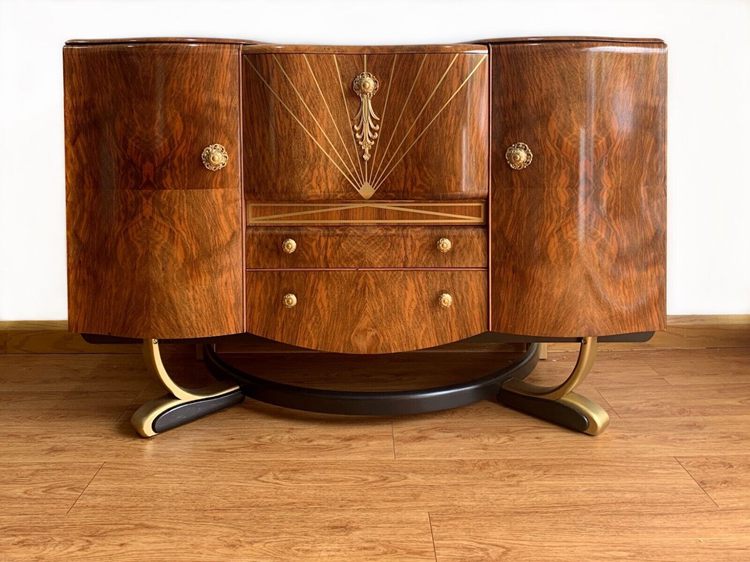
Coastal Furniture Style
The coastal furniture style is as different from traditional American furniture as it can be. This design isn’t delicate like conventional chairs and doesn’t have any sharp edges or corners.
The Coastal style looks rough and rugged with a mix of natural and industrial materials, often with reclaimed woods or old barn wood.
It’s a stylish way to add rustic flavor to your home without going overboard on the farmhouse trend.
These pieces are typically large enough to seat 4-5 people but still small enough to occupy little space on your floor or coffee table.
The sleek simplicity makes this style perfect for those looking for something refreshingly different that they can quickly love.
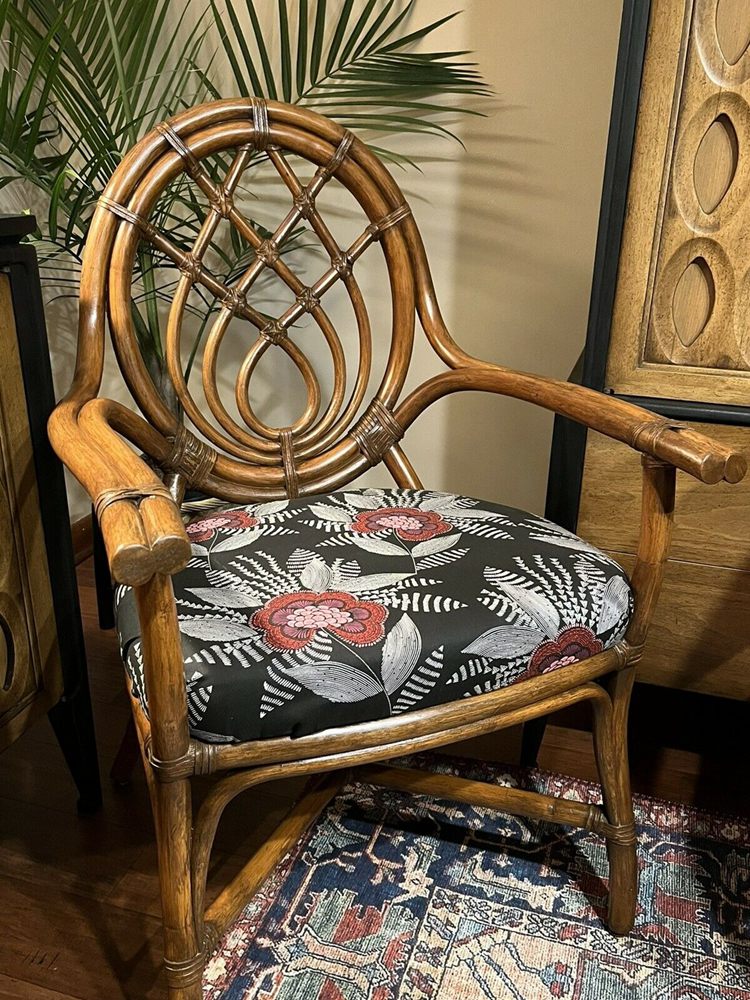
Scandinavian Furniture Style
Scandinavian Contemporary design, named after the group of European countries from which it originated, was popular in the early twentieth century. It is distinguished by three tenets: functionality, minimalism, and simplicity, as well as a practical design made of natural wood.
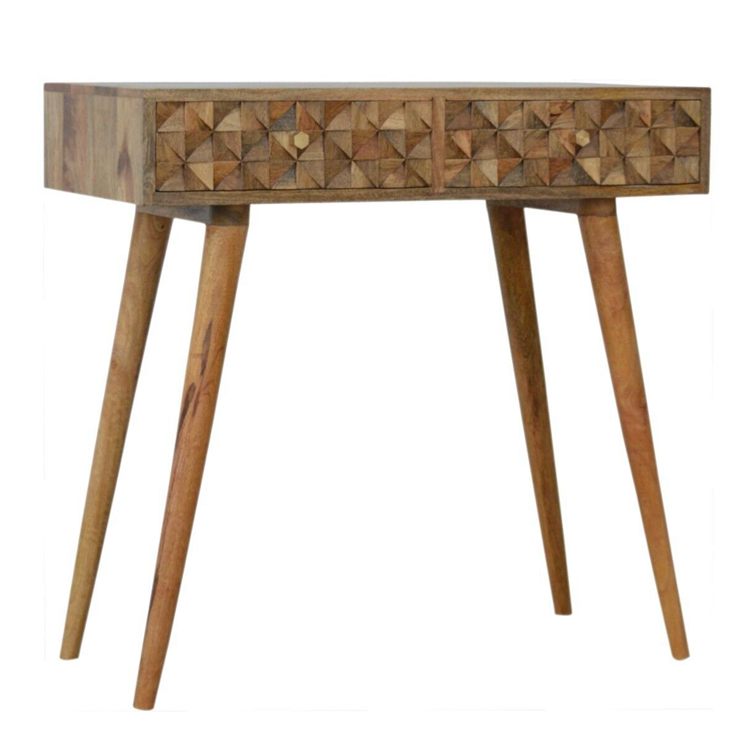
Modern Style
The modern style arose from the modernist movement of the early 1900s. It is best known for its monochromatic color palettes and use of materials such as steel, vinyl, leather, and plastic.
Retro Style
Rustic furniture adds charm and coziness to any room. This style is typically made of wood or natural materials such as hide, cotton, and linen. Accents are an excellent way to achieve the rustic furniture style look.
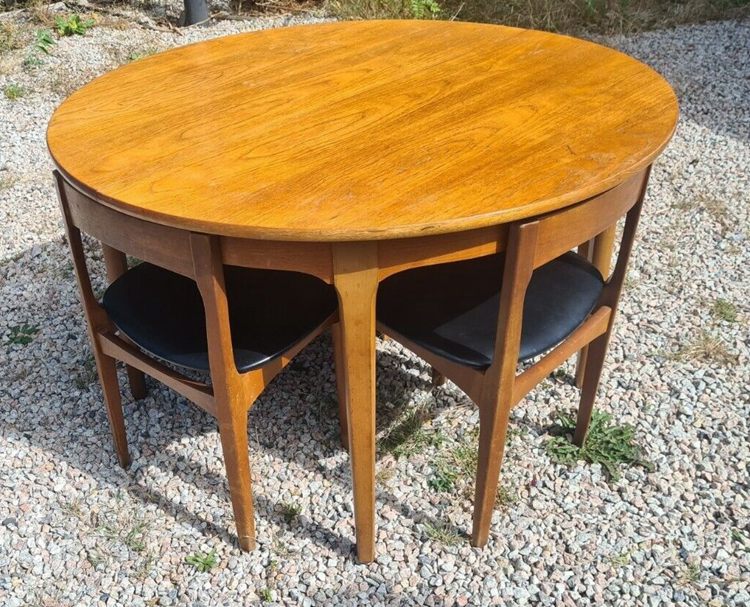
How To Identify Antique Furniture Styles?
Antique furniture is a popular item to own. It is timeless, beautiful, and can add some old-world charm to your home. Moreover, it will grow in value as the years go on.
If you love antique furniture, then you know that it can be challenging to figure out which pieces are old and which ones are just old-styled.
Luckily, there are some simple steps you can follow to identify different antique furniture styles. Remembering these few guidelines will help ensure your money doesn’t get wasted on poorly made reproductions or fakes.
1. Look for Signs of Wear and Tear
One of the biggest giveaways for identifying vintage pieces is how worn they appear! High-quality reproductions don’t show any sign of wear and tear, so if a piece looks well-worn, it’s most likely authentic.
2. Look for Bronze Patina
Metal accents on wood pieces can help give them a classic look, but these are often applied over new wood. The patina on bronze furnishings which have been in circulation for 100 years, is unmistakable and helps you determine the actual age of a piece.
3. Inspect the Carvings
The hand-carved details on antique furniture set it apart. It is most likely a reproduction if you see any machine, laser, or computer-cut carvings on your antiques. But it does not mean that there are no antique pieces with these features, but simply that they shouldn’t be present on most antique pieces.
4. Look for Style Consistency
While there are many styles of antique furniture, each has specific traits that characterize it as one style. To determine if the piece you are looking at is authentic or reproducible, you need to ensure consistency with the other pieces in your collection or home.
5. Size
Furniture before the Civil War was generally smaller than today’s furnishings. Pieces were made at home or by local craftsmen and often had to be compact to fit in the day’s home. As time went on, however, people’s homes became more extensive, and so did furniture styles.
6. Color Scheme
Victorian or Esque pieces will often have heavy patterns or shades of green that would not be used in other styles of antiques. Use a black light to see if the paint contains arsenic, which was popular during that period.
7. Leg And Foot Style
The best way to identify antique furniture is to look at its legs and feet, which vary from style to style.
For example, furniture from the early 17th century had bun and ball style feet, whereas furniture from the 18th century had ball and claw style feet.
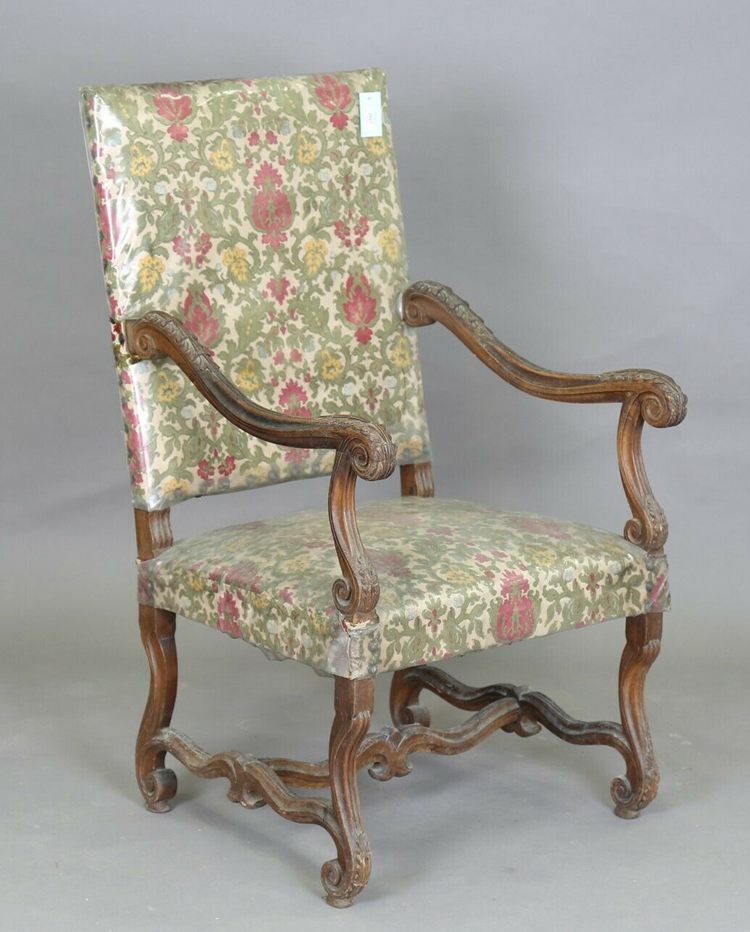
Final Words
Antique furniture is a notable and worthy collection for any antique collectors and furniture lovers. It can prove a payback investment, as these antique furniture styles will give a unique look to your homes.





![Where To Sell Antique Furniture In 2022 [Ultimate Guide]](https://www.jacquelinestallone.com/wp-content/uploads/2022/09/Etsy-Your-Place-To-Buy-And-Sell-All-Things-Handmade-600x450.jpg)


